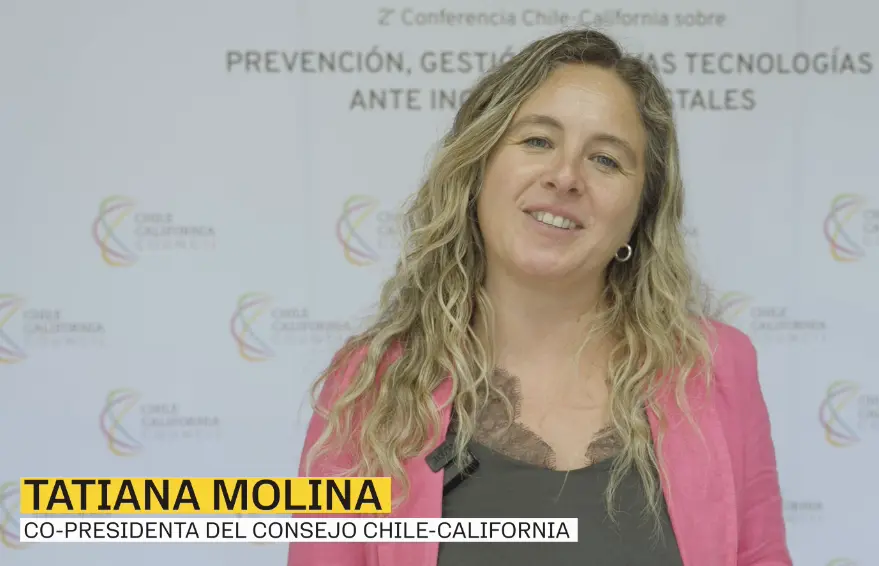The Chile-California Council celebrated a decade of building bridges between Chile and California during the October 19 annual meeting held virtually.
The Chile-California Council (CCC) is a binational nonprofit organization, established in San Francisco with 501(c)(3) status, that promotes mutually beneficial relationships and the exchange of knowledge between Chile and California in the public and private sectors.
The Council’s mission is to promote and coordinate the transfer of knowledge and lessons learned in key development areas in both Chile and California where nature, people, science and technology interact. The areas of action include clean energy, climate change, coastal resilience, nature conservation, impact investment and entrepreneurship, and education and culture.
Chile-California Ties
The geographic, climatic, economic and historical similarities between Chile and California are propitious for a collaboration that result in synergies and mutual benefits for both regions. The Council’s aim is to establish meaningful and long-term relationships to the mutual benefit of both regions and the planet.
The link between Chile and California dates back to the mid-19th century, when the “Gold Rush” created the first loose ties between these trans-hemispheric twins. Since then, a deep relationship has been forged based on collaboration and an exchange of knowledge in various areas to the mutual benefit of both regions.
Chile and California coincide geographically between latitudes 30º and 40º in their respective hemispheres. Both regions have extensive coasts along the Pacific that strongly influence their economies and cultures. Their central coastal areas constitute two of the five ecosystems in the world that have Mediterranean climates, which means that their energy and agricultural potentials are quite similar.
1963 was the inception of the Chile California Program. In the early 1960’s, Chile and California signed an agreement as part of John F. Kennedy’s Alliance for Progress Program. In 2008, the Chile California Plan was launched. The Chile California Plan was created as a result of the Memorandum of Understanding between Chile’s President Michelle Bachelet and California’s then-Governor Arnold Schwarzenegger.

Susan Corrales-Diaz (left), chair of the CalChamber Council for International Trade, thanks Chile President Michelle Bachelet Jeria as she leaves a CalChamber breakfast forum in 2008, accompanied by Chilean Minister of Foreign Affairs Alejandro Foxley (right) and CalChamber President Allan Zaremberg.
Chile-California Council
The CCC’s Councilors are a diverse group of leaders from Chile and California, all of them innovate changemakers in their fields of action. The Council is chaired by Rafael Friedmann and includes California and Chilean government officials, academicians, scientists, and private sector representatives, including Paula Estevez, CEO of the American Chamber of Commerce in Chile and Susanne Stirling, vice president of international affairs of the California Chamber of Commerce.
Both California Lt. Governor Eleni Kounalakis and Chilean Undersecretary of the Ministry of Foreign Affairs, Carolina Valdivia addressed and congratulated the Council members. The Council members then held an interactive session to discuss the challenges, opportunities, and steps for cooperation the next decade in the areas of energy, coastal resilience, food, entrepreneurship, and natural disasters.
To learn more:
- View the Chile-California Council corporate video.
- View the Chile-California Council corporate presentation.
- Visit the CalChamber Chile Trading Partner Portal page.
U.S.-Chile Free Trade Agreement
Since the U.S.-Chile Free Trade Agreement was implemented on January 1, 2004, bilateral trade between Chile and the United States has grown while both trade and investment opportunities abound. The CalChamber is a strong supporter of the agreement.
Two-way trade in goods between the United States and Chile was approximately $22.87 billion in 2020. According to the U.S. Department of Commerce, U.S. goods exports to Chile increased over 450% in the 16 years since the trade agreement went into effect, from $2.7 billion in 2003 to $12.766 billion in 2020, making it the U.S.’ 21st largest export destination. Top exports to Chile included petroleum and coal products (22.55), chemicals (12.8%), nonelectrical machinery (11.9%), and computer and electronic products (10.5%).
Imports to the U.S. from Chile totaled $10.113 billion in 2020. Top imports from Chile to the United States include primary metal manufacturing (29.1%), agricultural products (17%), other animals (13.6%), and wood products (9.2%). Nearly 12,000 U.S. firms export approximately 5,000 different products to Chile. More than 2,000 Chilean firms exported as many different products to the U.S.
U.S. foreign direct investment (FDI) in Chile totaled $25.08 billion in 2019, and Chilean FDI into the U.S. totaled $3.43 billion in the same year. This makes Chile the third fastest growing source of FDI in the U.S. in 2019. Chilean FDI supports about 8,3000 jobs in the U.S. Chilean FDI into the U.S. invested $1 million into research. The top industries that received FDI from Chile were food and beverages, financial services, software & IT services, business services, metals, and medical devices (Select USA).
In 2020, Chile was California’s 30th largest export destination, with $987 million in exports. Top exports from California to Chile include petroleum and coal products, computer and electronic products, nonelectrical machinery, and food manufactures. Imports from Chile to California totaled $1.38 billion in 2020. Top imports from Chile to California include agricultural products, food manufacturers, wood products, and beverages and tobacco.
Medio: CalChamber


